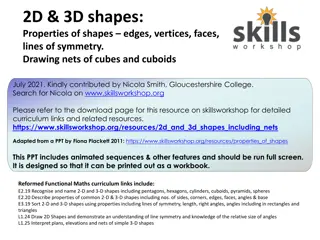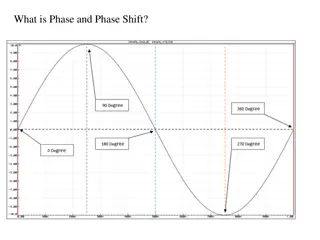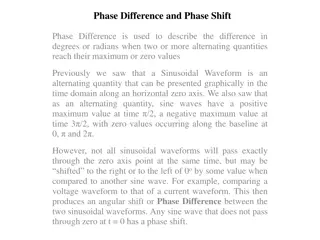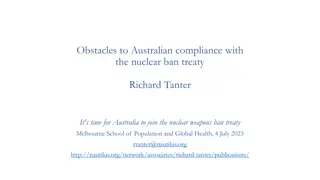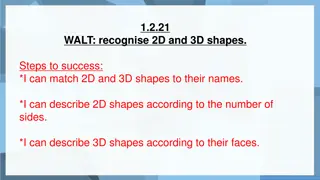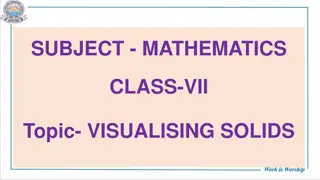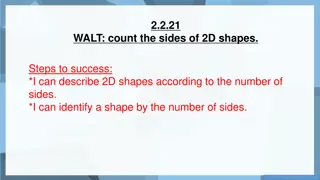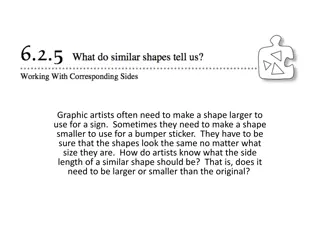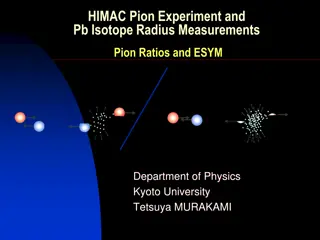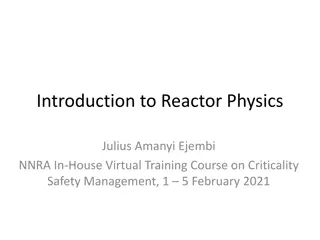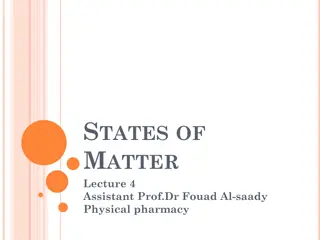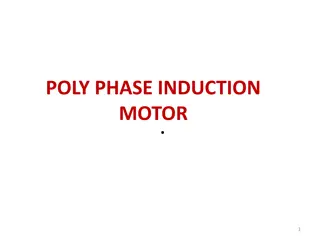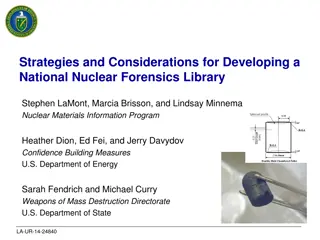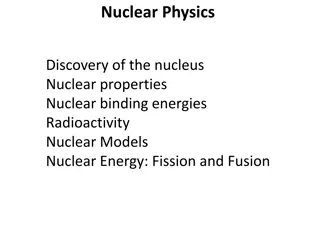Nuclear Shapes at Critical Point of U(5)-SU(3) Phase Transition
Exploring nuclear shapes at the critical point of the U(5)-SU(3) nuclear shape phase transition using Bohr Hamiltonian with a sextic oscillator potential. The study investigates the transition from a spherical vibrator (U(5)) to a prolate rotor (SU(3)), providing insights into the Interacting Boson Model (IBM) and Bohr-Mottelson Model. The research utilizes a general sextic potential to introduce barriers between spherical and deformed minima, leading to eigenvalue scaling and diagonalization for obtaining energies and wave functions. The study focuses on the radial-like differential equation for prolate deformed nuclei, emphasizing the importance of effective potentials and boundary conditions in achieving convergence for energy states.
Download Presentation

Please find below an Image/Link to download the presentation.
The content on the website is provided AS IS for your information and personal use only. It may not be sold, licensed, or shared on other websites without obtaining consent from the author. Download presentation by click this link. If you encounter any issues during the download, it is possible that the publisher has removed the file from their server.
E N D
Presentation Transcript
Nuclear shapes for the critical point of the U(5) SU(3) nuclear shape phase transition Petric Buganu, Radu Budaca, Andreea Budaca Department of Theoretical Physics Horia Hulubei National Institute of Physics and Nuclear Engineering Bucharest Magurele, Romania SSNET 18 International Conference on Shapes and Symmetries in Nuclei: From experiment to theory November 5 9, 2018, Gif sur Yvette, France
Content Brief Introduction and Motivation for the present study Bohr Hamiltonian with a sextic oscillator potential Nuclear shapes for the critical point of the phase transition from spherical vibrator [U(5)] to prolate rotor [SU(3)] Conclusions
Brief Introduction and Motivation for the present study R. F. Casten, Nature Physics 2 (2006) 811. Interacting Boson Model (IBM): F. Iachello, A. Arima, The Interacting Boson Model, Cambridge University Press, Cambridge, England, 1987. Bohr Mottelson Model: A. Bohr, Mat. Fys. Medd. K. Dan. Vidensk. Selsk. 26 (1952) No. 14; A. Bohr, B. R. Mottelson, Mat. Fys. Medd. K. Dan. Vidensk. Selsk. 27 (1953) No. 16.
X(5): F. Iachello, Physical Review Letters 87 (2001) 052502. X(5) P. Cejnar, J. Jolie, and R. F. Casten, Reviews of Modern Physics 82 (2010) 2155. Reviewed solutions of the Bohr-Mottelson Hamiltonian in: L. Fortunato, Eur. Phys. J. A 26 (2005) 1. P. Buganu, L. Fortunato, J. Phys. G: Nucl. Part. Phys. 43 (2016) 093003.
Bohr Hamiltonian with a sextic potential having simultaneous spherical and deformed minima Radial-like differential equation for the variable for prolate deformed nuclei is: [F. Iachello, Phys. Rev. Lett. 87 (2001) 052502] A general sextic potential is used to introduce the barrier separating the two minima: 2 4 6 ( ) v a b c = + + R. Budaca, P. Buganu, A. I. Budaca, Phys. Lett. B 776 (2018) 26 31. R. Budaca, A. I. Budaca, EPL 123 (2018) 42001. The eigenvalue can be scaled as follows: ( ) = + + 2 4 6 v a b Due to the scaling property, one can start from the beginning with a potential of the form: Making the change of function , one obtains a new form for the equation: ( ) ( ) = ( ) ( ) ( ) ( ) 2 2 3 The energies and the wave functions are obtained by a diagonalization using the basis states + = = + 2 + 1 L L 2 2 ( ) = + + + + + = 2 4 6 v a b v eff eff 2 3 2 2 J n ( ) 0, 1 L L 9 4 ( ) ( ) W = W , , for v ( ) n , > 3 J + W 1 W n J are Bessel functions of the first kind, while n are their zeros associated to the boundary conditions for a suitably chosen limiting value w, which encompass the relevant part of the sextic potential. The boundary value w is determined so that to achieve a satisfactory convergence for all considered energy states for a given dimension of the diagonalization basis. In this study, the parameters a and b, describing the associated effective potential, are fixed such that the two minima, separated by a barrier, to have the same minimum energy. Page 5
Page 6 R. Budaca, A. I. Budaca, EPL 123 (2018) 42001. R. Budaca, P. Buganu, A. I. Budaca, Phys. Lett. B 776 (2018) 26 31.
Th. Exp. Page 7 R. Budaca, A. I. Budaca, EPL 123 (2018) 42001..
Conclusions The influence had by the barrier for the critical point of the phase transition from spherical vibrator to axial rotor is investigated in the frame of the Bohr-Mottelson model using a sextic potential for the variable. Moreover, the study goes beyond this particular situation by increasing considerably the height of the barrier. The parameters, describing the associated effective potential, are fixed such that the two minima, separated by barrier, to have the same minimum energy. The Hamiltonian is diagonalized in a basis of Bessel functions of the first kind, which in turn are solutions for the same problem but for an infinite square well potential. Analyzing the density distribution probabilities for the ground state and for the first 0+ excited state, but also the monopole transition matrix element between these two states, one can see how the barrier influence dramatically the deformation of the ground and excited states and moreover, the fact that these states could present shape coexistence, coexistence with mixing and fluctuations, respectively, depending on the height of the barrier. An experimental realization for the present model is found for 76Kr, which is known for its shape coexisting behavior.
[R. Budaca, P. Buganu, A. I. Budaca, Phys. Lett. B 776 (2018) 26 - 31]








